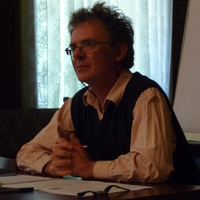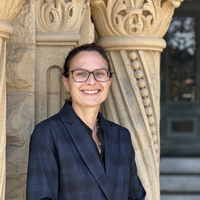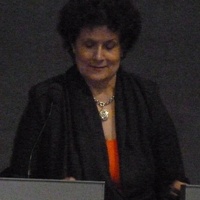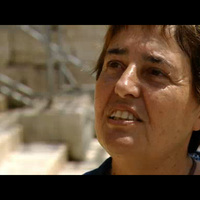
Saffron Newey
PhD Candidate, RMIT, Melbourne
Australian Postgraduate Award Scholarship recipient
Australian Postgraduate Award Scholarship recipient
less
Related Authors
Galen Strawson
The University of Texas at Austin
Dylan Trigg
Central European University
Patricia Blessing
Stanford University
David Seamon
Kansas State University
Claire Bishop
Graduate Center of the City University of New York
Romy Golan
Graduate Center of the City University of New York
Shaun Gallagher
University of Memphis
Renata Holod
University of Pennsylvania
Olga Palagia
National & Kapodistrian University of Athens
jelena bogdanovic
Vanderbilt University
InterestsView All (10)










Uploads
Papers by Saffron Newey
This paper focuses on two migrant, European painters who influenced the perception of a cultural identity in the newly colonised Australia between 1850 and 1890: Swiss-born, Abram-Louis Buvelot (1814-1886) and Austrian, Eugene von Guerard (1811-1901). Both have been posthumously honoured as “fathers of the Australian landscape” and, conversely, criticised for their misrepresentation of Australian history.
The paintings of Von Guerard and Buvelot make a departure from the first colonial portrayals of the Australian pastoral which were mainly scientific illustrations. The period of landscape painting that followed featured a Eurocentric gaze that resembled more a Claude Lorraine than the local environment. Buvelot and von Guerard however, approached the landscape with an unprecedented naturalism and ambience.
To those at home in Europe, this new Australian landscape would tell the story of a bushy Shangri La; a romantic narrative, indeed. And yet, these images of majestic mountains and harmonious farmland belie Australia’s wretched past - as a penal colony, the genocide of indigenous peoples, its harsh climate and burgeoning, unmanageable population.
Such is the prevailing critique of these two “fathers of Australian landscape”. One may well question the artist as the arbiter of history and identity. Is identity, after all, synchronic or are its conditions more mutable?
Buvelot and von Guerard’s paintings present a version of events.
I access their artworks online, which likewise, presents multiples - variations on each “original”. From the fractured space of the Internet, I source, appropriate, further distort and misquote the contended narratives painted by these two artists. My paintings, oil on linen, represent even further slippage from any claim that the artist may have on history or identity.
This paper focuses on two migrant, European painters who influenced the perception of a cultural identity in the newly colonised Australia between 1850 and 1890: Swiss-born, Abram-Louis Buvelot (1814-1886) and Austrian, Eugene von Guerard (1811-1901). Both have been posthumously honoured as “fathers of the Australian landscape” and, conversely, criticised for their misrepresentation of Australian history.
The paintings of Von Guerard and Buvelot make a departure from the first colonial portrayals of the Australian pastoral which were mainly scientific illustrations. The period of landscape painting that followed featured a Eurocentric gaze that resembled more a Claude Lorraine than the local environment. Buvelot and von Guerard however, approached the landscape with an unprecedented naturalism and ambience.
To those at home in Europe, this new Australian landscape would tell the story of a bushy Shangri La; a romantic narrative, indeed. And yet, these images of majestic mountains and harmonious farmland belie Australia’s wretched past - as a penal colony, the genocide of indigenous peoples, its harsh climate and burgeoning, unmanageable population.
Such is the prevailing critique of these two “fathers of Australian landscape”. One may well question the artist as the arbiter of history and identity. Is identity, after all, synchronic or are its conditions more mutable?
Buvelot and von Guerard’s paintings present a version of events.
I access their artworks online, which likewise, presents multiples - variations on each “original”. From the fractured space of the Internet, I source, appropriate, further distort and misquote the contended narratives painted by these two artists. My paintings, oil on linen, represent even further slippage from any claim that the artist may have on history or identity.